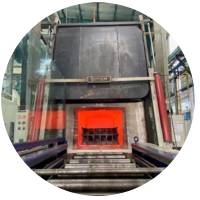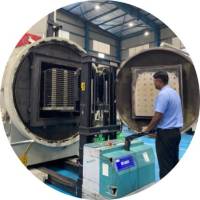“Enhancing Properties through Heat Treatment in Metal Injection Molding: A Comprehensive Overview”
Metal injection molding (MIM) is suitable process for producing small and complex metal parts. MIM of steel parts is simpler, lesser in cost, can produce in high volumes at less time compared to other conventional methods such as machining. Many applications needs higher hardness than the sintered parts. Heat treatment process is done to achieve the desired metallurgical properties.
The heat treatment process transforms metals with temperature and time to improve durability and unlock the potential of metals to suit various applications is aimed to change the microstructure and helps better the physical properties like shear strength, and improves wear resistance.
At INDO-MIM there are various furnaces for different types of processes such as Sealed Quench furnaces, ECM Furnaces, Tempering furnaces, Vacuum Heat treatment furnaces and vacuum tempering furnaces along with washing and sub-zero equipment. Examples of steel grades that are heat treated of SS 17-4PH, M2 (steel), S7, 4605, SS-420, HK 30 etc…)
Sealed quench furnace is a type of atmosphere furnace that uses a gas mixture to create a controlled environment for carburizing, hardening, and other processes. The furnace also has a oil quenching system which has ability to rapidly cool the heated metal parts in a controlled manner, known as quenching. The furnace is designed with a sealed chamber that prevents oxidation and contamination of the workpieces.

Vacuum heat treatment furnace uses a vacuum environment to process materials at high temperatures. It has many advantages, such as preventing oxidation, reducing contamination, and improving the quality of the products. Inert Gas is used at high pressure to quench the parts.

ECM Furnace is a Low Pressure carburizing vacuum furnace is having capacity of Double heating chambers. It is used for higher productivity and throughput. It ensures dimensional accuracy and reduces the distortion of parts while preventing inter-granular oxidation during carburizing. It minimizes energy loss and emissions compared to a single chamber vacuum furnace. It increases production capacity and process repeatability.






